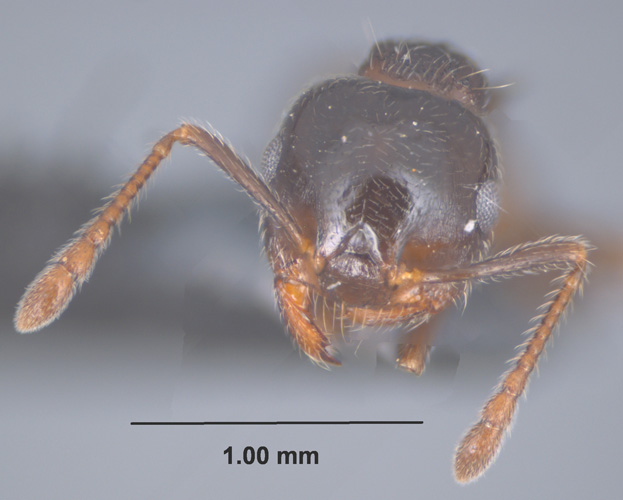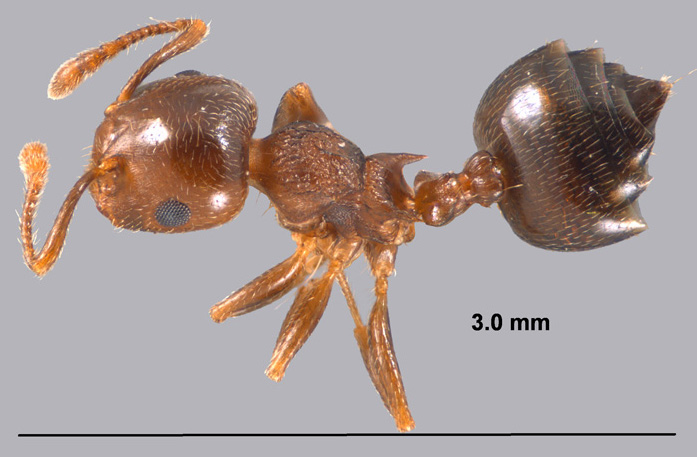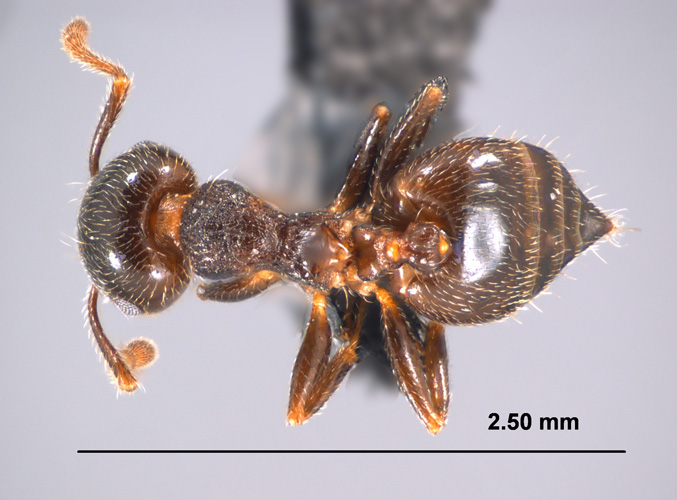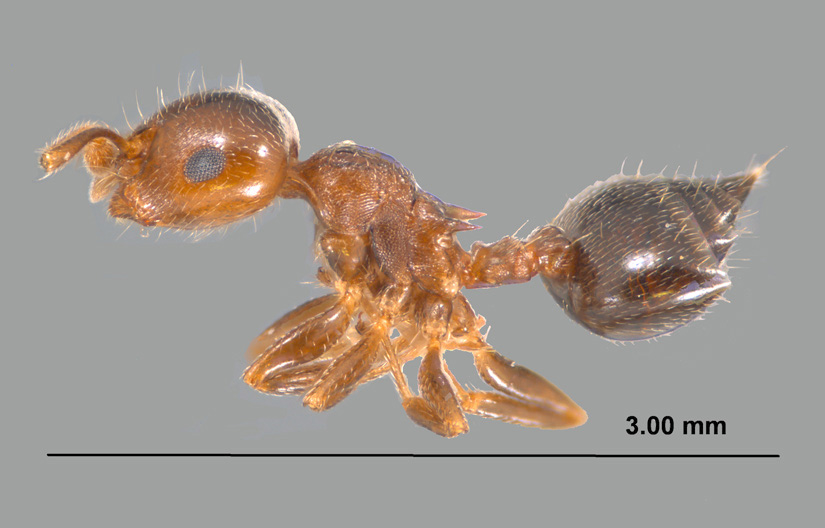Subfamily MYRMICINAE |
|
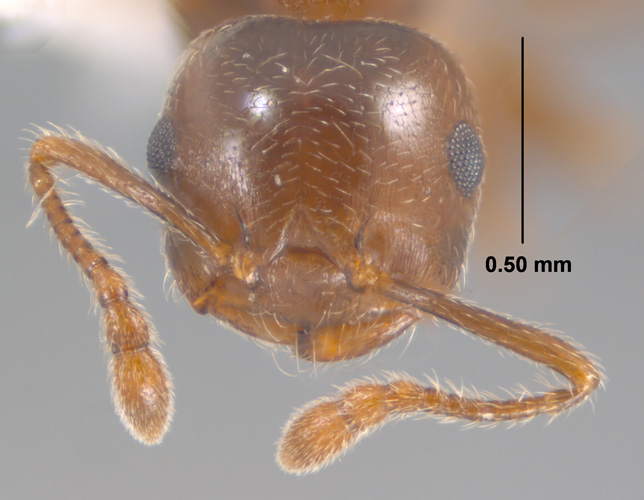 |
|
Crematogaster vermiculata, frontal views of the heads of workers Click image to enlarge). |
|
Crematogaster vermiculata, dorsal view of a worker Click image to enlarge). |
|
Crematogaster vermiculata, dorsal view of a worker Click image to enlarge). |
|
Crematogaster vermiculata, profile view of a worker Click image to enlarge). |
|
Ants in the genus Crematogaster are often referred to as acrobat ants because of their propensity to arc the gaster upward and over the alitrunk in a manner that resembles a contortionist or acrobat. They are small, monomorphic ants. Workers have an 11-segmented antenna, the presence of variably long propodeal spines, a flattened petiole, and a somewhat heart-shaped gaster. The postpetiole is attached to the dorsal surface of the gaster, and this characteristic will differentiate this genus from other genera in our area. Crematogaster vermiculata is variable in color from light brown to dark blackish-brown. Workers have relatively long propodeal spines, the pronotal pleurae is sculptured with transverse ridges or rugulae, the pronotum has erect hairs confined to the humeral shoulders, and the thoracic dorsum has rugoreticulatum present. This rugoreticulatum is the primary means of separating this species from C. cerasi, which has longitudinal short striations or ridges. Crematogaster vermiculata appears to be an uncommon species in both AL and MS. This species nests in the soil under objects or in rotting stumps in a variety of habitats. Links |
|


